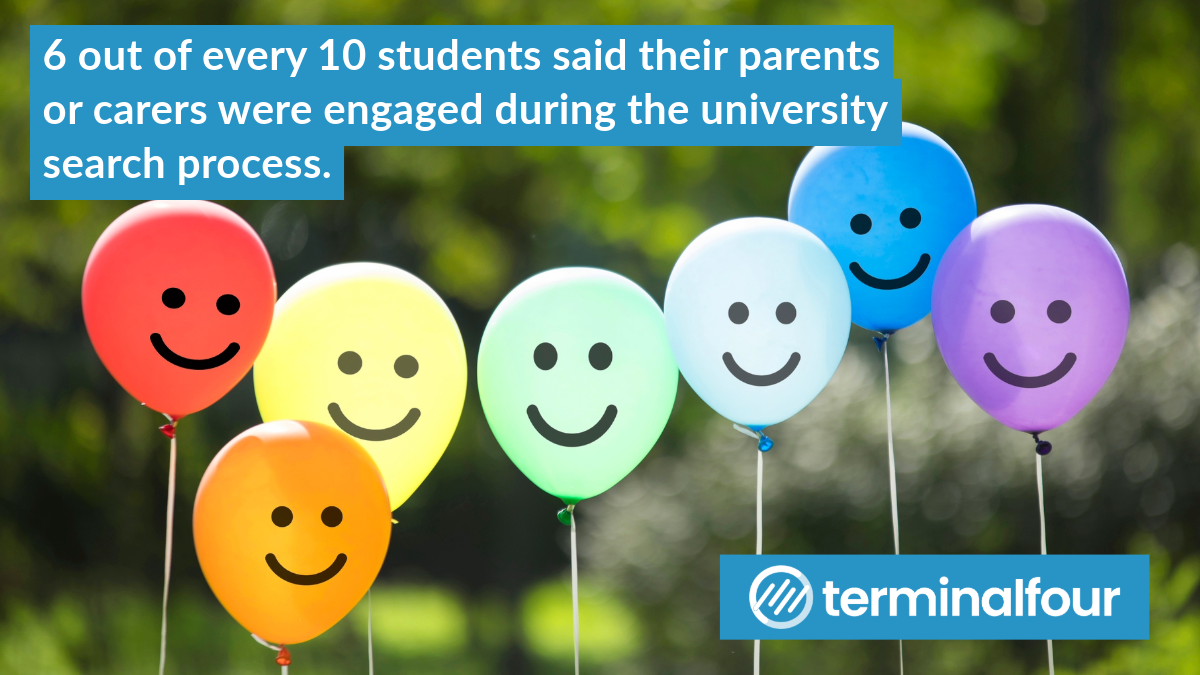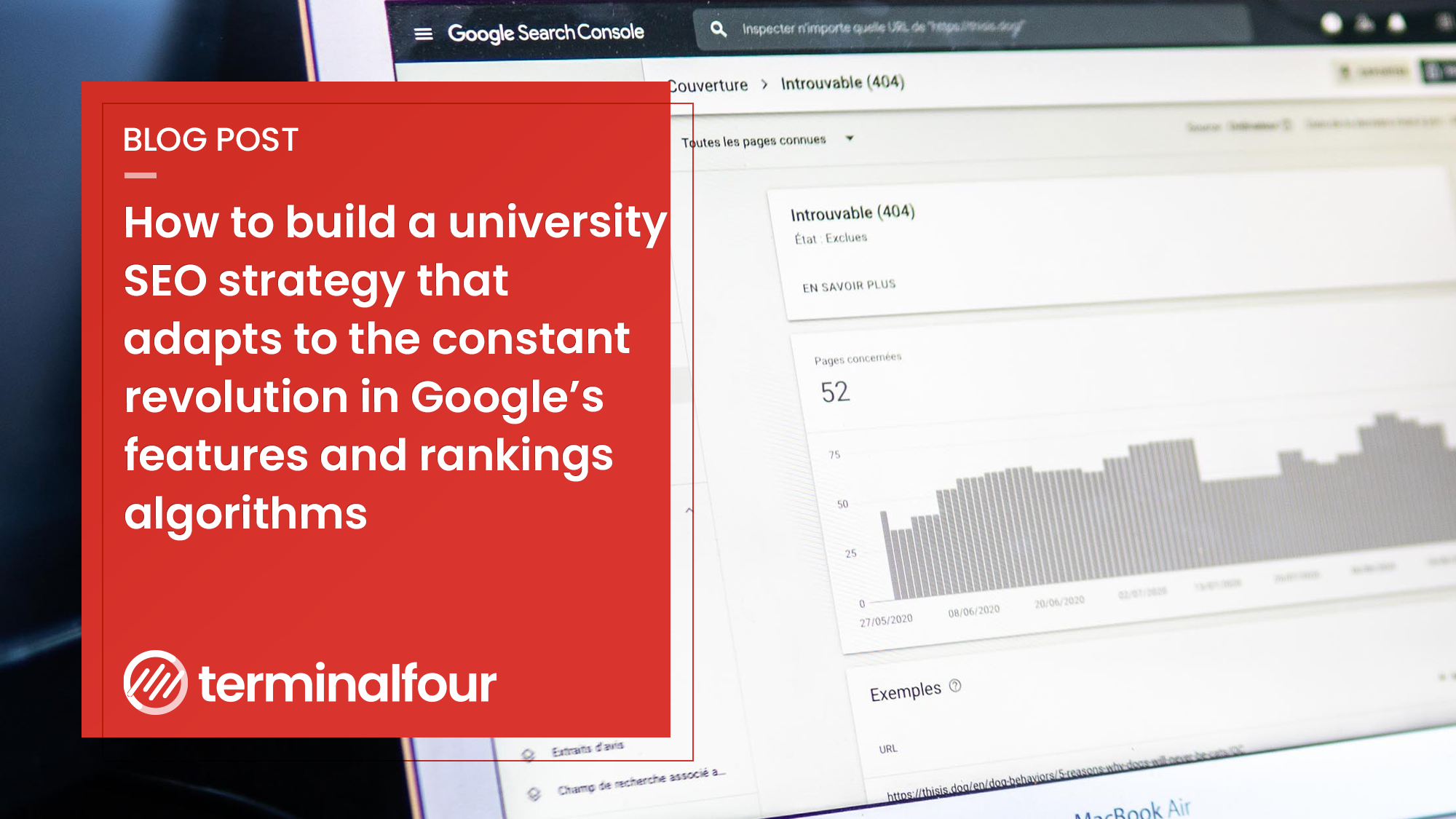1. How to create an omnichannel digital marketing experience for students
In this blog post, we shared strategies higher education institutions can develop to create a seamless omnichannel marketing experience for students, improving engagement and communication across multiple digital touchpoints.
We cover strategies like integrating email, social media, web, and mobile to create cohesive student experiences that match the expectations of today’s digitally savvy students.
These actionable steps will help you build an omnichannel presence and student-centered experience, ultimately improving student recruitment and retention.
2. How to market to prospective students by marketing to their parents
Targeting parents with relevant information on safety, academic reputation, and financial considerations can significantly influence a student’s decision to enroll.
In this still-relevant article from 2019, we focused on the often-overlooked strategy of marketing to the parents of prospective students, who play a significant role in the decision-making process.
We outlined practical approaches to engage parents through tailored content, personalized communication, and clear messaging about safety, career prospects, and value for money.
This article provides a guide to successfully connecting with parents as a key audience.
3. How to use nano-influencers in higher education digital marketing
Nano-influencers offer a cost-effective way to build trust and connect with prospective students through genuine, personal recommendations.
In this post, we explored how universities can harness the power of nano-influencers—individuals with smaller but highly engaged followers.
These influencers provide authentic recommendations that resonate with prospective students.
This strategy is still relevant today as authenticity and peer recommendations continue to drive digital marketing success in higher education.
A well-optimized landing page can significantly boost student recruitment efforts by maximizing conversion opportunities. In this two-part series, we broke down how universities can craft landing pages that capture attention and convert visitors into leads.
We provide actionable tips on optimizing design, writing compelling copy, and strategically placing calls-to-action. The advice remains relevant as effective landing pages are still a critical tool for lead generation.
Regular A/B testing helps universities continually improve their marketing efforts by making decisions based on actual user behavior.
In this article, we cover how split A/B testing allows universities to experiment with different versions of web pages or campaigns to see what works best.
By using real-time data, higher ed institutions can make informed decisions to optimize user experience and increase conversions, This remains a key tool for data-driven marketing decisions in higher education today.
Targeted LinkedIn Ads can be an effective way to connect with prospective students and alumni, particularly in graduate and professional programs.
Find out how LinkedIn Ads can be a valuable tool for reaching potential students and alumni with detailed guidance on setting up campaigns, targeting the right demographics, and optimizing ad performance.
LinkedIn's professional network continues to be a relevant platform for higher education marketing that you can use to recruit graduate and mature students.
Automating key marketing processes allows universities to nurture prospective students more effectively and efficiently while maintaining a personalized approach.
In this guide, we highlight how marketing automation can streamline communication with prospective students by automating repetitive tasks, personalizing messaging, and tracking engagement.
Take a look how this can be a vital tool for institutions looking to nurture leads at scale while maintaining personalization.
8. How to Marie Kondo your content and spark joy for your website visitors
Simplifying and decluttering your web content can enhance user experience, making it easier for prospective students to find the information they need. Inspired by the decluttering methods of Marie Kondo, we show how universities can simplify their web content to improve user experience.
By eliminating unnecessary information and organizing content logically, universities can create a streamlined experience for their visitors.
In a world full of content, this post remains as relevant as ever, with a new generation that expects intuitive, clutter-free navigation.
An adaptive SEO strategy ensures that your website remains visible and competitive, even as search engine algorithms change.
In this post, we explain how to create an adaptive SEO strategy to keep up with changing algorithms and user behavior.
We discuss the importance of mobile optimization, high-quality content, and user experience in maintaining a strong SEO presence.
With search engines constantly evolving, it’s important to keep up with your strategy to stay competitive in the digital space for higher education.
10. How to master Google Snippets for higher education websites - Part I and Part II
Optimizing content for Google Snippets can enhance visibility and drive more organic traffic to your website, improving engagement with prospective students—it’s a prime opportunity to increase visibility in search results. In this two-part series, we offer practical advice on optimizing content to appear in snippets, which helps boost click-through rates and drive more traffic to university websites. With the advent of AI, it’s even more important to create short answers to questions to better feature in search results.
Do you have other how-to guides that have been useful in the last 10 years of our higher education digital marketing blog?
Share them with us below on or social media.

:format()//media/10-years-of-social-media-marketing-how-tos---RQ.png)









